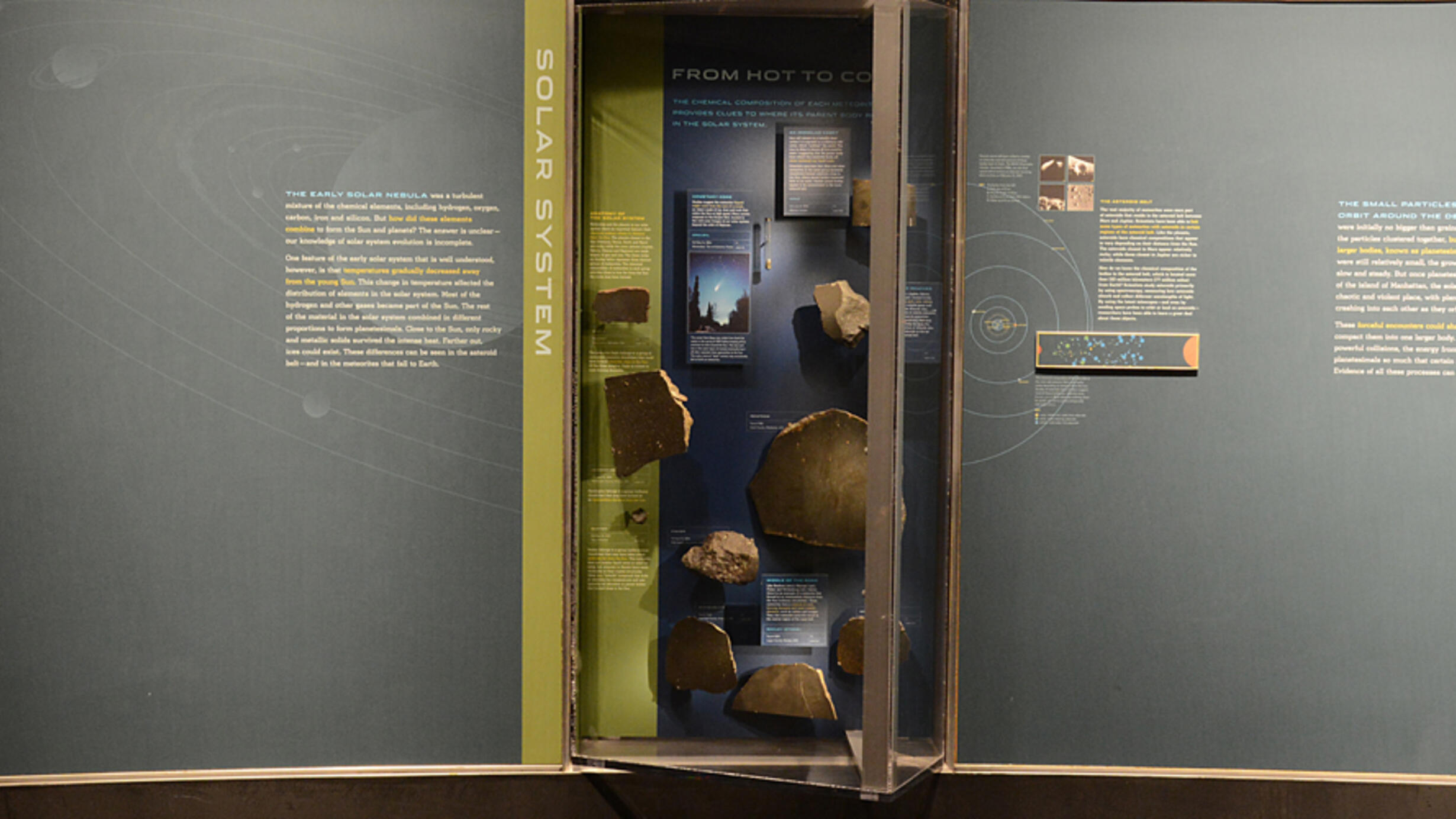Solar system
Part of Hall of Meteorites.

The early solar nebula was a turbulent mixture of the chemical elements, including hydrogen, oxygen, carbon, iron and silicon. But how did these elements combine to form the Sun and planets? The answer is unclear—our knowledge of solar system evolution is incomplete.
One feature of the early solar system that is well understood, however, is that temperatures gradually decreased away from the young Sun. This change in temperature affected the distribution of elements in the solar system. Most of the hydrogen and other gases became part of the Sun. The rest of the material in the solar system combined in different proportions to form planetesimals. Close to the Sun, only rocky and metallic solids survived the intense heat. Farther out, ices could exist. These differences can be seen in the asteroid belt—and in the meteorites that fall to Earth.